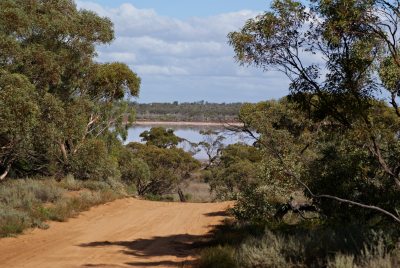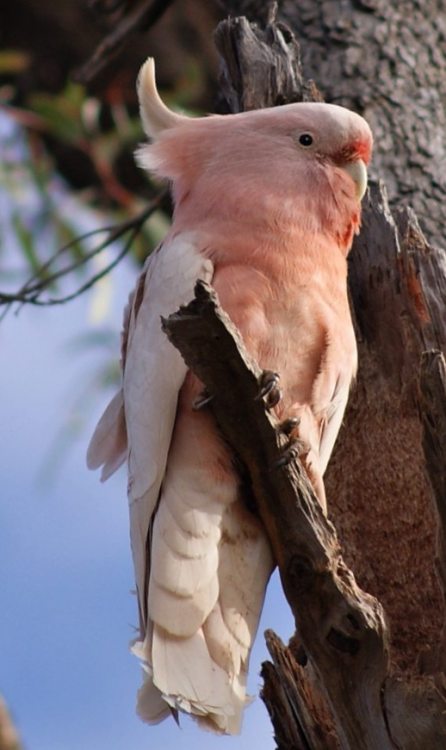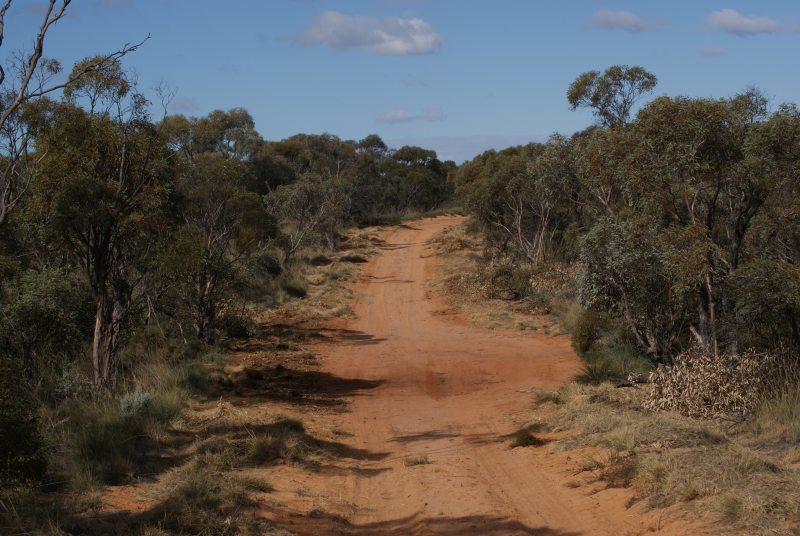Inland Victoria and Melbourne 04-06/06/2011
Off to the mallee.

|
Day 2
Up just before dawn, a quick breakfast of kippers and coffee and out on the one-in-twenty chance of Malleefowl on some of the roads around the park. As expected, no Malleefowl, but they are hard birds to find. Walking around some of the tracks, we did find Spiny-cheeked and Yellow-plumed Honeyeaters and a Collared Sparrowhawk chasing birds through the trees. Back in the park, we found another mixed flock of thornbills, including the inland race of Yellow Thornbill, which is much paler than those found on the east coast, along with a Silvereye and Grey Fantail. A few Darters flew over between the lakes in the park. Driving further into the park, a group of Chestnut-crowned Babblers flew across the road.
Already three good lifers up since breakfast, one of the best was now seen: Major Mitchell's Cockatoo.

Major Mitchell's Cockatoo
We made one last trip back up the Nowingi Track to look for one of our target birds (which I'll explain in a minute), but found that it was very quiet. This part of the park has spinifex grass, which is rather spikey as the plant has a high level of silica present, resulting in prickly ankles. It's also the preferred habitat of the bird we were looking for, without any success up to that point. As we were about to return to the car, the bird - in fact a family of them - appeared, hopping in and out of the spinifex and running between clumps of the stuff: the Mallee Emu-wren! Australia's lightest bird and only its long, wispy tail prevents it from being its smallest.

Hattah-Kulkyne National Park
It was time to get back to Melbourne - Ed had work in the morning and I was off to look for coastal birds the next day. On the six-hour trip back, we passed Black Kites circling over fields, Straw-necked Ibis, Masked Lapwings, Wood Ducks sitting around ponds, Little Ravens, White-faced Herons, Eastern Rosellas, Pacific Black Ducks, Long-billed Corellas and Common Mynahs.
> Day three



